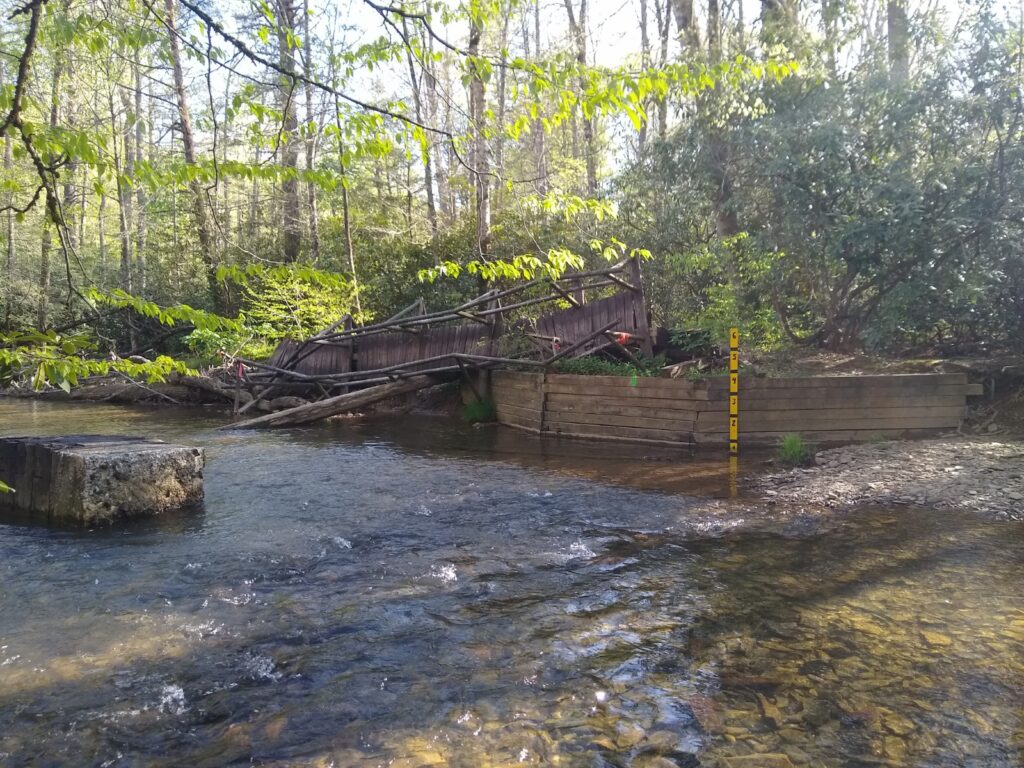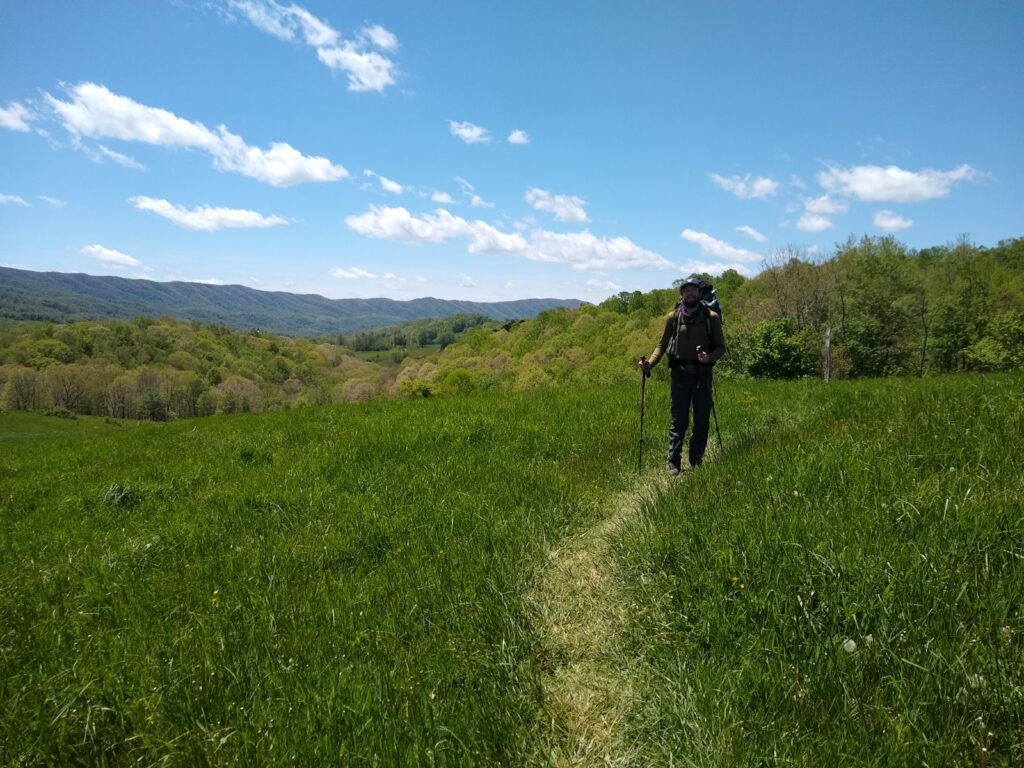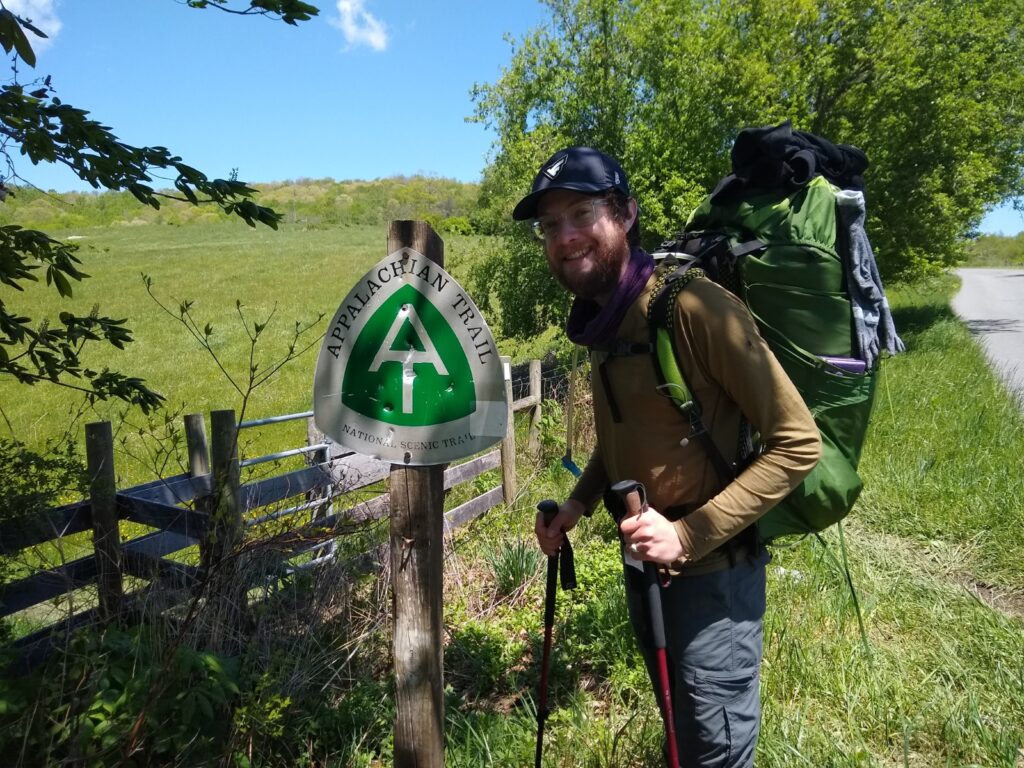- Miles 552.4-563.8 (11.4 mi.)
- Total ascent: 3461‘; descent: 3812‘
We notched our belts with a new type of obstacle today: the ford. High water took out the bridge to Lick Creek, our campsite for the evening. We were tempted to camp at the south side of the waterway, but Rachel rightly pointed out it would be more efficient to cross when we’re about to change into our Crocs anyway.
The water was only ankle deep, fortunately, but it had a nudge to it. And oh-em-gee was it cold.
Just in case a hiker was without water shoes, someone strung a pair on a pulley that could be pulled to either side of the stream.
Some quick tips on fording waterways:
- If in doubt about your ability to cross safely, do not attempt it. Wait for the water level to fall and find a passeable stretch.
- Walk into the current. If the current is too strong to fight, see step 1.
- Unbuckle your pack. it is better to let your pack go than to be dragged by it in an emergency.
- Put on water shoes. Never cross barefoot. Rocks are slippery, and losing your footing is easy.
- Cross smaller waterways individually but larger ones in groups. Make sure everyone gets across safely before continuing on.
Water is incredibly powerful. The bridge over this creek was made of railroad ties and rebar. If the current can knock it out, or at least pummel it with floating timber, it can knock over a human meat sack no problem.
Other than the fording fun, we walked on a lot of easements. On either side of the trail, in at least two points, were farms with barns and grazing cattle. We spent a lot of time dodging cow pies and climbing ladders over barbed wire, only to do so again after a half hour in a forested stretch. Finally, for the final three miles of the day or so, we regained our “green tunnel” for good (until tomorrow) and enjoyed the Knot Maul valley’s cool, shady rhododendron cover.
I have been meaning to look up what proportion of and where the trail is easements, but I think it is surprisingly little. The first signs we saw for easements (though I’m sure we’ve used them before) we saw today. I believe the great majority of the trail is on National Forest land.
I also enjoyed a lunchtime conversation Rachel and I had about mileage. From where we are, we’ll need to average 12 miles per day to be finished in exactly five months. That’d be mid-September, just as we’d planned. Rachel and I meet a lot of people trying to out-mile each other, and it’s easy to feel like you’re doing something wrong by not pushing 22 miles that day.
We are taking our sweet time, and I could not be happier about it.



